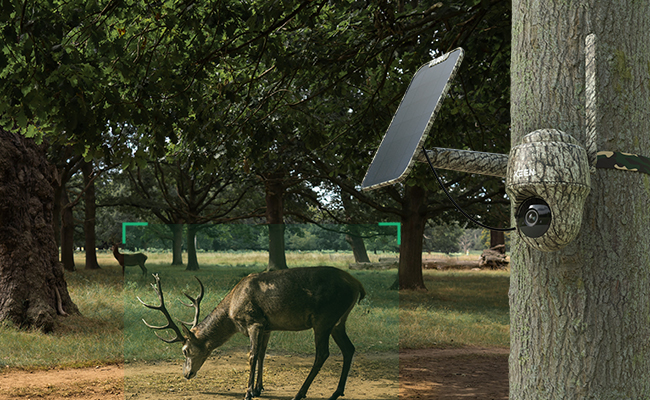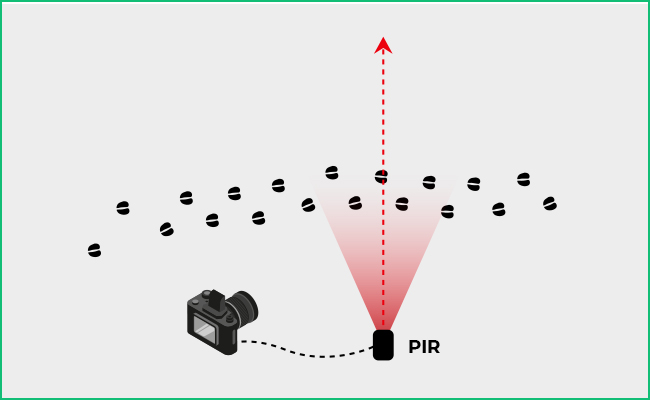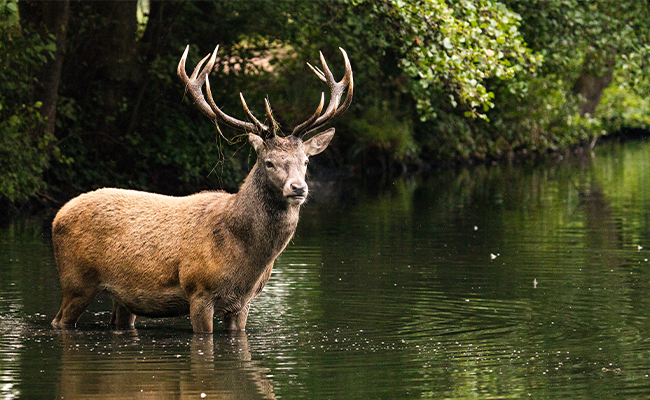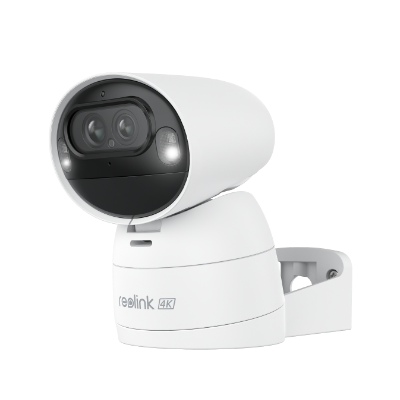An Overview and Set Up Guide to Wildlife Camera Traps in 2024

Imagine if you could watch an animal as it performed its daily routine, whilst capturing video footage of them without disrupting their behaviour - this is what wildlife camera traps allow us to do!
Wildlife camera traps are becoming an invaluable tool for wildlife researchers and hunters to gather new data and track a variety of hard to observe animal species. This article provides an overview of everything you need to know about wildlife camera traps, includes a basic set up guide, some tips of getting great footage and answers some common frequently asked questions.
What is a wildlife camera trap?
Wildlife camera traps are to capture behavioural habits of common and rare animal species of all shapes and sizes, and have been used for many years. Nowadays, the wild life camera trap generally refers to a cellular trail camera, one that you can buy on Amazon or Best Buy.
Early models used trip wire as the trigger mechanism to take an image of an unsuspecting animal. The flash on early models were renowned for being loud and bright, scaring animals whenever an image was taken.
Modern wildlife camera traps have evolved to ensure less interference with an unsuspecting animal and snap photos without frightening them. What is more beneficial about modern day camera traps is that the advancements in digital photography and video technology make these devices more versatile and affordable than ever before. They can also capture longer hours of footage and store substantially more images.
For wildlife researcher in particular, the trail camera trap is an important tool. This simple device can help scientists learn about animal behavior and movements in ways that no other tool can. To use this device, they need to be mounted to a fixed location and programmed to take pictures or videos when an animal walks by.
Which types of wildlife camera trap are available?
Wildlife camera traps were once prohibitively expensive, but with advances in technology, they are now more accessible and affordable for hobbyists and researchers alike. There are two types of wildlife camera traps available on the market. Types include a DSLR Camera Trap and a Trail Camera Trap. Let’s distinguish between the two, go through some of their features and relay the set-up steps below.
A trail camera or a game camera
A trail camera, otherwise known as a game camera, is a type of camera trap used by researchers and hunters to remotely capture images of wildlife. PIR sensors are used to detect animal movement, and the cameras are often equipped with WiFi or 4G capabilities for easy remote viewing.
Cellular trail cameras are a great way to keep an eye on your property and get some great wildlife shots.
But how do cellular trail cameras work?
Basically, cellular trail cameras work by using a cell network to send data. The camera has a SIM card, which is connected to a cell network. When the camera takes a picture, the data is sent over the cell network to the remote viewer.
In comparison to the DSLR camera trap, a trail camera is battery-operated and does not require a receiver, making them relatively easy to set up and use. When choosing a trail camera, it is important to consider the battery life, WIFI range, and sensor sensitivity. Trail cameras can be an invaluable tool for research or hunting endeavors.
A DSLR camera trap
A DSLR wildlife camera trap is a digital camera that is automatically triggered by an infrared sensor to take photographs or videos of wildlife. The DSLR camera trap is used in ecological research and by amateur photographers and beneficial to take footage of animals in their natural habitat without disturbing them.
The DSLR camera trap consists of a DSLR camera, an infrared sensor, a receiver, and a transmitter. The steps to set up a DSLR camera trap are as follows:
1. Mount the DSLR camera on a tripod that is pointed towards the area where the wildlife is likely to be found.
2. Place the infrared sensor (IR) in front of the DSLR camera and connect to the receiver.
3. Connect the receiver to the transmitter.
One of the main advantages of a DSLR camera trap is that you can take your time setting up off-camera flashes to achieve dramatically lit shots of nocturnal creatures. This produces bright and high-resolution colored pictures. The disadvantage of the DSLR camera traps is that they can disturb the animal's habitat by the bright flash and may scare them away.
How to trigger a DSLR wildlife camera trap
There is two ways to trigger a DSLR wildlife camera trap. Triggers can be through PIR motion sensors or with a transmitter and receiver.
Trigger with PIR motion sensors

A passive infrared sensor or PIR for short, are an easy way to detect animals without having to constantly check your camera. PIR motion sensors work by detecting infrared radiation, which is emitted by all living things.
When an animal walks in front of the PIR sensor, the sensor will trigger the camera to take a picture. PIR Motion Sensors are very sensitive, so they can be set to only trigger when there is a large amount of infrared radiation, such as that emitted by a human or large animal.
PIR Motion Sensors are very efficient and don’t consume much power. This means they can remain on standby for a long period of time. PIR Motion Sensors are easy to use as they simply plug in to your camera’s shutter release socket. PIR Motion Sensors are an essential tool for any wildlife photographer.
Trigger with a Transmitter & receiver (detector)

Another way to trigger a wildlife camera trap is to use a transmitter and receiver. The transmitter sends out an infrared light signal, which is interrupted by an animal passing through the frame. The receiver then picks up the signal and triggers the camera.
This method is generally considered to be more reliable than using a PIR. This is because it is less likely to be triggered by false positives such as by small insects or branches swaying in the wind. Two caveats for this trigger method are that it does require more setup time and may not be suitable for all types of animals.
To set up your camera trap with a transmitter and receiver, simply attach the transmitter to the camera and place it in an area where you want to observe wildlife. Then, position the receiver so that it points towards the transmitter. When an animal crosses the path of the transmitter, the receiver will receive the signal and trigger the camera. You can experiment with different positions for the transmitter and receiver to get the best results.
What are some features to look for in trail camera?
When you're shopping for a trail camera, it's important to consider the available features you can get and their associated benefits. Here are five features to look for when buying your next model.
1. WIFI or 4G connectivity
WIFI or 4G connectivity is an important feature for trail cameras. This is because with WIFI or 4G capability, you can view the pictures and videos remotely. The major benefit of this is that you do not have to go back to the site frequently to gather the footage. Returning to the site runs the risk of the animals to be alerted, and as a consequent, disrupt your research or photograph opportunities. Another benefit of this feature is you can share the pictures and videos with others easily.
WiFi-enabled wildlife cameras are ready to use instantly once powered up. No complicated setup required. Some WiFi cameras offer greater flexibility in terms of where you can place them. This makes them ideal for remote locations, allowing you to capture wildlife activity even in hard-to-reach spots, such as the Reolink Argus Track.
4K Dual-Lens Wi-Fi Solar/Battery Camera
4K 8MP Ultra HD, Auto-Zoom Tracking, Pan, Tilt & 6X Hybrid Zoom, Color Night Vision, Dual-Band Wi-Fi.
4G cellular cameras operate using a SIM card and cellular data. They can be placed anywhere without being limited by WiFi availability. They are perfect for remote wilderness areas where WiFi signals are weak or nonexistent, such as the Reolink Go PT Ultra.
4K 8MP Wire-Free 4G LTE PT Battery Camera
4K 8MP; Smart Detection; 355° Pan & 140° Tilt; Battery/Solar Powered; Color Night Vision; Smart Real-Time Alert.
2. GPS
GPS enabled devices can help you keep track of your camera over a long period of time. This is especially useful if you are monitoring a large area or if you forget where the camera was placed. GPS enabled devices can also help you track the movement of animals over time. This is an advantageous feature for any research or hunting activities, as you can see patterns in animal behavior that you might not otherwise notice.
3. Night Vision
Many animals are active at night, and any visible light will only disturb them. Infrared LED lights allow the trail camera to work at night without disturbing the animals. Another important and beneficial feature if you're trying conduct research or hunt. As a result, you'll be able to get clear, unobstructed footage of whatever you're tracking.
4. Weather Resistant
If you're going to be setting up your camera in a humid or damp area such as a rainforest, deep woods, or near a sea, the camera needs to be able to withstand any wind and rain without getting damaged or malfunctioning.
5. Trigger Time
To capture fast-moving animals like deer or rabbits on film, look for a trigger time of 0.2 seconds or less.
Finding the best spot to place a wildlife camera trap

Finding the best spot for your camera can be the difference between getting great footage or coming up empty handed. Placement is key to ensuring that the camera trap will be able to capture useful footage.
Here are some tips to consider when looking for an ideal spot to set up your wildlife camera trap:
- By fixing the camera near a drinking water source, or a wildlife habitat, or an animal's path, you can improve the success rate of capturing wildlife photos. The key is to find a location where the animals are likely to congregate or pass by on a regular basis. Once you've found such a spot, simply set up the trail camera and wait for the action to unfold. With a little patience, you'll soon be rewarded with some amazing shots of the local wildlife.
- Look for animal trails, particularly ones that cut through a difficult obstacle such as thick bush or a steep bank. This ensures that the animal will walk directly in front of the camera, and that the camera doesn’t block the animal’s path.
- Make sure the location provides enough cover for the camera trap. If the camera trap is too exposed, animals may be hesitant to approach it, or they may be caught on camera by passers-by
- Check for any potential obstructing elements in the area if conditions change. This is important when placing the camera trap in an area with unstable or volatile changes in the weather.
By taking care in choosing an ideal location, researchers can maximize their chances of getting useful footage from their camera trap.
How to take sharper pictures with a wildlife camera trap
Taking a great picture with a wildlife camera trap is harder than it seems, but it doesn’t have to be! It’s all about placement, timing, and habitat. Here are some tips that will make your next photoshoot a success.
-
Placement: It’s important to place your camera trap in an area where animals are likely to pass by. If you can’t find an ideal location near food sources or watering holes, consider placing the camera near a trail or path that animals are known to frequent.
-
Timing: Animals are most active at certain times of day or year—so it can be helpful to learn about their habits so you can plan around them when taking photos. For example, if you want to shoot a photo of a deer during the summer months, they tend to be more active during dawn and dusk hours when the sun isn’t directly overhead.
-
Habitat: If possible, try not to disturb an animal's habitat too much while setting up your camera trap—they might feel threatened by the presence of your equipment and could become afraid of returning to their normal routines if they associate these objects with danger instead of safety.
Conclusion
From this article, it is evident that modern wildlife camera traps are innovative tools for researchers and hobbyists alike. They can be used to study everything from the movement of predators and their prey, the behavior of rare or elusive species, and for hunters to track animals in real time. Modern wildlife camera traps have evolved to include an important evolutionary detail, that is that no animal gets hurt when they are is use. Finally, they are also more affordable than they have ever been in the past, making these devices accessible to a larger pool of people from all walks of life.
FAQ’s
What are wildlife camera traps used for?
There are several purposes and uses for wildlife camera traps. Here are some of them.
- The most pertinent use for wildlife camera traps is for scientific research purposes. Scientists will use them to study the behavior and movements of animals, as well as to track any changes in animal populations over time.
- Camera traps can be used for hunting purposes. They are useful for hunters to locate and track game animals.
- Camera traps are also becoming increasingly popular among amateur enthusiasts and nature lovers for animal watching.
Whatever the purpose, camera traps are an invaluable tool for learning about and observing the natural world. As technology becomes more sophisticated and affordable, it's likely that we'll see even more people using camera traps to explore the world around them.
How much does a wildlife camera trap cost?
When it comes to choosing a wildlife camera trap, there are a few things to consider, including price.
- Option 1: A wireless PIR device costs about $160. This does not include the cost of the DSLR camera itself.
- Option 2: A DSLR transmitter & receiver kit will set you back around $440.
- Option 3: A trail camera is the most affordable option, costing between $70 and $180.
So, what's the best option for you? Ultimately, the decision comes down to personal preference and on your budget. Features also play an important role and influences the price. What features you choose will depend on what you're looking for and how you’ll be using the camera trap. With so many options on the market, it's important to do your own research before making a purchase.
How effective are wildlife camera traps?
Wildlife camera traps are getting more effective as the technology evolves. Camera traps can be placed in a variety of locations, such as on trees, on the ground, or in water. They can be left unattended for long periods of time, which makes them an efficient way to collect data.
Due to being able to be activated remotely, cameras traps are important and effective tools for scientists and conservationists to study the behavior and ecology of animals, as well as to track the movements of endangered species.
What are the limitations of wildlife camera traps?
Camera traps do have some limitations, however. As an example, they can only capture what passes in front of them. Because of this, they may miss rare or elusive animals that are outside the scope of the capture. Furthermore, camera trap data can be difficult to interpret, and it is sometimes difficult to determine whether an animal has been caught more than once. Despite these limitations, camera traps are an important tool for understanding wildlife populations and their movements.
Search
Be in the Know
Security insights & offers right into your inbox


